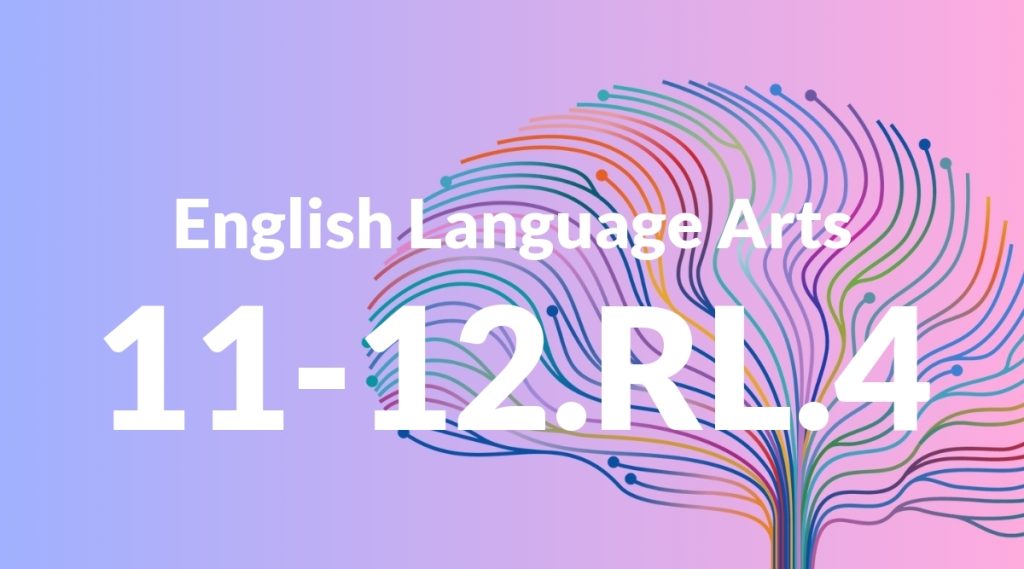Standard: 11-12.RL.4 – Determine the meaning of words and phrases as they are used in the text, including figurative and connotative meanings; analyze the impact of specific word choices on meaning and tone, including words with multiple meanings or language that is particularly fresh, engaging, or beautiful. (Include Shakespeare as well as other authors.)
Grade level: Grade 11-12
Subject: English Language Arts
Domain: Reading: Literature
Teacher Overview
This standard focuses on the critical analysis of word choices in literature, helping students to understand and appreciate the nuanced meanings and tones that authors create. By mastering this standard, students will gain deeper insights into texts and develop sophisticated analytical skills that are essential for higher-level literary analysis. Students should be familiar with basic literary devices and have some experience with close reading and textual analysis. They should be able to distinguish between literal and figurative language and understand the concept of connotation.
Students will be able to apply their understanding of word choice and tone to more complex texts and will develop the skills to craft their own writing with intentional use of language to convey specific meanings and tones.
Common Misconception 1
One common misconception is that students often believe words have only one fixed meaning. This is incorrect because many words have multiple meanings that can change depending on the context in which they are used.
Intervention 1
To address this misconception, teachers can encourage students to use context clues and dictionaries to explore the different meanings of words. Classroom discussions and exercises that focus on how word meanings change in different contexts can also be helpful.
Common Misconception 2
Another misconception is that students might think figurative language always has a single, straightforward interpretation. In reality, figurative language can be interpreted in multiple ways, and different readers may perceive it differently based on their own experiences and perspectives.
Intervention 2
Teachers can use examples from various texts to show how figurative language can have multiple interpretations. Encouraging students to discuss and debate their interpretations can help them understand that figurative language is often subjective and open to multiple readings.
Prerequisite Knowledge
Students should have a foundational understanding of basic literary devices such as metaphors, similes, and personification. They should also be familiar with the concept of connotation versus denotation and have experience with close reading and textual analysis.
Subsequent Knowledge
After mastering this standard, students will be able to apply their understanding of word choice and tone to more complex texts, including advanced literature and academic writing. They will also develop the skills to craft their own writing with a clear and intentional use of language to convey specific meanings and tones.
Instructional Activities
- Close reading exercises focused on identifying and interpreting figurative language.
- Group discussions analyzing the impact of word choices in different genres of literature.
- Creative writing assignments that require students to use varied word choices to evoke specific emotions.
- Comparative analysis of different translations of the same text to explore how word choices affect meaning.
- Interactive workshops where students rewrite passages using different word choices to change the tone.




